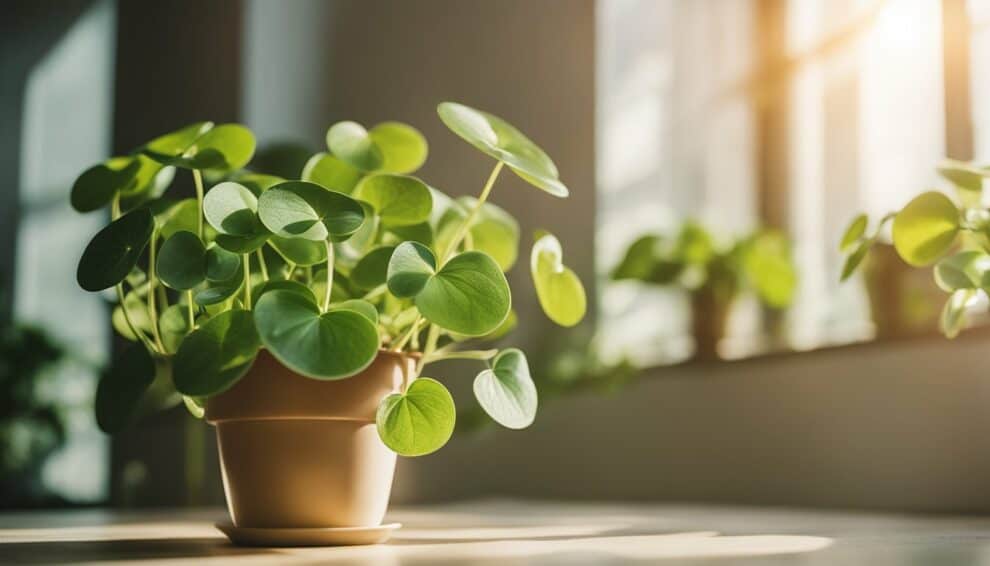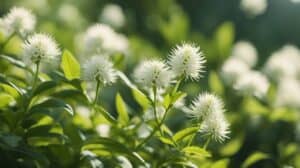The Chinese Money Plant, also known as Pilea peperomioides, is a popular houseplant among novice plant parents.
It is a member of the nettle family and is native to the Yunnan Province in China.
Its unique round leaves and easy-to-care-for nature make it a great addition to any indoor plant collection.

One of the most interesting facts about the Chinese Money Plant is its origin story.
In 1946, a Norwegian missionary named Agnar Espegren brought the plant back from China and shared cuttings with friends and family.
From there, the plant spread throughout Norway and eventually made its way to other parts of the world.
Today, it is a beloved plant among plant enthusiasts and is known for its ability to thrive in low to medium light conditions.
If you’re a novice plant parent looking to add a new plant to your collection, the Chinese Money Plant is a great choice.
Not only is it easy to care for, but it also adds a unique touch to any space with its round leaves and interesting history.
Keep reading to learn more about this fascinating plant and how to care for it.
Origin and History
Pilea peperomioides, commonly known as the Chinese money plant, is a popular houseplant that has gained a lot of attention in recent years.
It is native to the Yunnan Province in China and was first collected by Norwegian missionary Agnar Espegren in 1946.
Native Habitat
The Chinese money plant is a member of the nettle family and is found growing in the wild in the shady, moist forests of Yunnan Province.
It is a perennial plant that grows up to 30cm tall and has round, flat leaves that are held on long petioles.
The plant is known for its unique appearance, with its leaves growing in a circular pattern around a central stem.
Cultural Significance
The Chinese money plant has a rich cultural history, particularly in Chinese folklore.
It is believed to bring good luck and prosperity to its owner, which is why it is often given as a gift.
The plant’s round leaves are said to represent coins, and it is believed that the more leaves a plant has, the more wealth it will bring.
In recent years, the Chinese money plant has become a popular houseplant in many parts of the world.
Its unique appearance and easy care requirements have made it a favorite among novice plant parents.
With proper care, the Chinese money plant can thrive in a variety of indoor environments, making it a great addition to any home.
Plant Care Essentials

Sunlight Requirements
The Chinese Money Plant thrives in bright, indirect sunlight.
Direct sunlight can scorch the leaves, while too little light can cause the plant to become leggy.
It’s best to place the plant near a window that receives filtered light or in a well-lit room.
Watering Routine
Overwatering is a common mistake made by novice plant parents. The Chinese Money Plant prefers to have its soil dry out slightly between waterings.
It’s important to check the soil moisture level before watering.
A good rule of thumb is to water the plant once a week during the growing season and reduce watering during the winter months.
Soil and Fertilization
The Chinese Money Plant prefers well-draining soil that’s rich in organic matter.
A good potting mix should be used, and it’s important to ensure that the soil is not too compacted.
Fertilization should be done every two to three months during the growing season using a balanced fertilizer.
Temperature and Humidity
The Chinese Money Plant prefers moderate temperatures between 65-75°F (18-24°C).
It’s important to keep the plant away from drafts and extreme temperature changes.
The plant also prefers moderate humidity levels, so it’s a good idea to mist the leaves occasionally or use a humidifier if the air is dry.
Propagation Techniques

Leaf Cuttings
One of the easiest ways to propagate a Chinese Money Plant is through leaf cuttings.
This method involves taking a healthy leaf from the parent plant and placing it in a pot with moist soil.
It is important to ensure that the leaf is placed facing upwards and that the stem is buried in the soil.
The pot should be kept in a warm and humid environment, and the soil should be kept moist.
After a few weeks, new roots should start to form, and a new plant will begin to grow.
Division
Another method of propagation is division. This involves removing the parent plant from its pot and separating the plant into smaller sections.
Each section should have its own roots and stems. The sections can then be planted in their own pots with fresh soil.
This method is best done in the spring or summer when the plant is actively growing.
Propagation can be a fun and rewarding way to expand your collection of Chinese Money Plants.
Whether you choose to use leaf cuttings or division, it is important to ensure that the new plants are given proper care and attention to ensure their success.
Troubleshooting Common Issues

Pest Problems
Pilea peperomioides is generally a hardy plant, but it can still fall victim to pests like spider mites and mealybugs.
These pests can cause damage to the leaves and stem, leading to stunted growth and even death of the plant.
To prevent pest problems, it is important to keep the plant in a well-ventilated area and avoid overwatering.
If pests are present, they can be treated with insecticidal soap or neem oil.
Make sure to follow the instructions on the product label and apply it to the affected areas.
Leaf Discoloration
Yellowing or browning of the leaves can be a sign of several issues, including overwatering, underwatering, or nutrient deficiencies.
To prevent leaf discoloration, make sure the plant is receiving the right amount of water and nutrients.
It is also important to avoid exposing the plant to direct sunlight, as this can cause sunburn and leaf damage.
If the plant’s leaves are turning yellow or brown, try adjusting the watering schedule or fertilizing the soil with a balanced fertilizer.
Stunted Growth
If your Pilea peperomioides is not growing as quickly as you expected, it may be due to a lack of nutrients or insufficient light.
Make sure the plant is receiving enough sunlight and nutrients, and consider adding a slow-release fertilizer to the soil.
It is also important to avoid overwatering the plant, as this can lead to root rot and stunted growth.
If the plant is still not growing, try repotting it into a larger container with fresh soil.
Frequently Asked Questions

How do I properly care for a Chinese Money Plant indoors?
Chinese Money Plants are relatively easy to care for and thrive in bright, indirect sunlight.
They prefer well-draining soil and should be watered once a week or when the top inch of soil feels dry to the touch.
Avoid overwatering or leaving the plant in standing water, as this can lead to root rot.
Additionally, it’s important to keep the plant away from cold drafts or extreme temperatures.
Can you grow a Chinese Money Plant in water, or does it need soil?
While it is possible to grow a Chinese Money Plant in water, it’s best to plant it in soil.
The plant prefers well-draining soil and may develop root rot if left in standing water for too long.
What kind of sunlight requirements does a Pilea peperomioides have?
Chinese Money Plants prefer bright, indirect sunlight.
Direct sunlight can scorch the leaves, while too little light can cause the plant to grow slowly or become leggy.
What is the spiritual significance of the Chinese Money Plant?
The Chinese Money Plant is believed to bring good luck and fortune to its owner.
It’s also considered a symbol of friendship and is often given as a gift.
How does one propagate a Chinese Money Plant and grow its ‘babies’?
Chinese Money Plants can be propagated by taking stem cuttings and rooting them in water or soil.
The plant also produces small ‘babies’ or offsets that can be gently removed and planted in their own pots.
Does the Chinese Money Plant bloom flowers, and if so, what do they look like?
Chinese Money Plants can produce small, white, or pink flowers in the spring and summer.
The flowers are relatively inconspicuous and are often hidden by the plant’s foliage.














